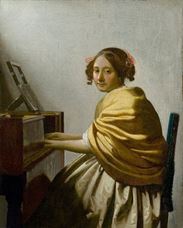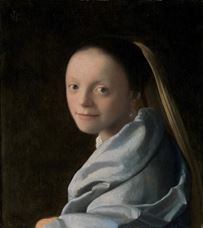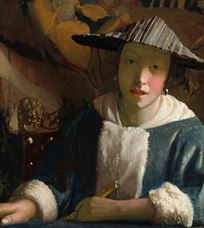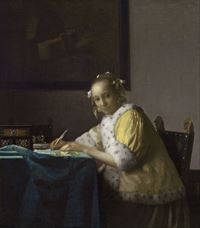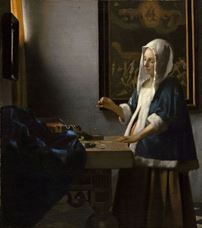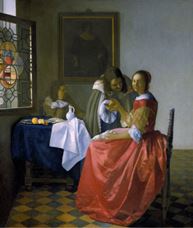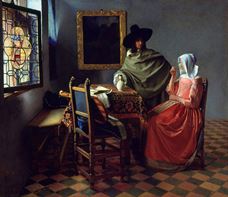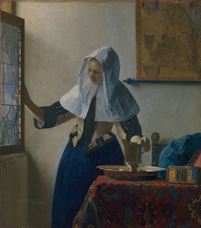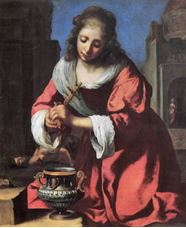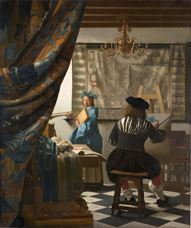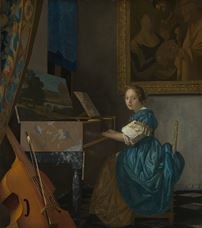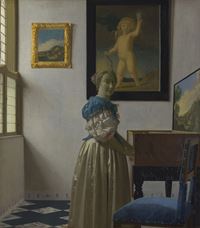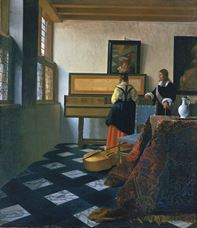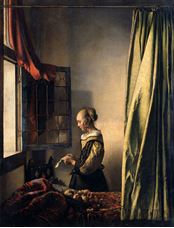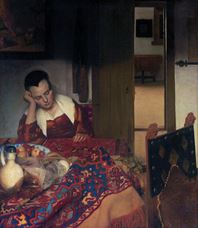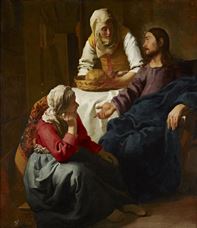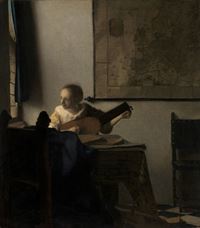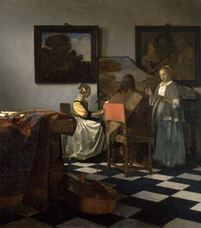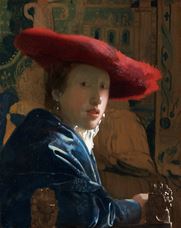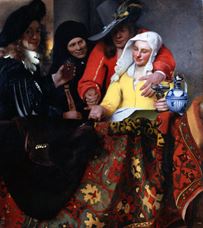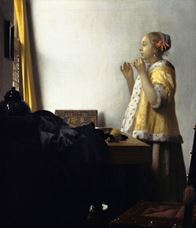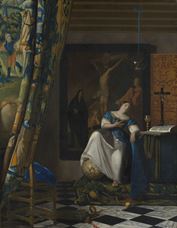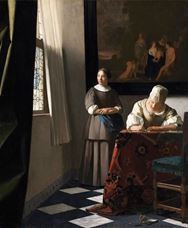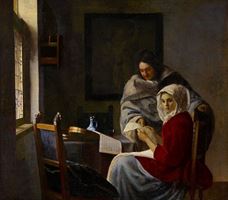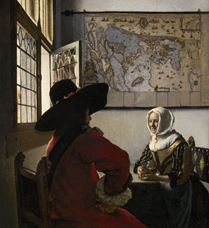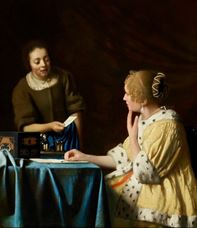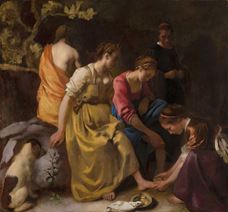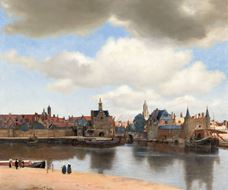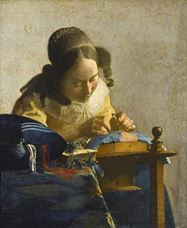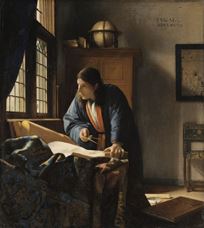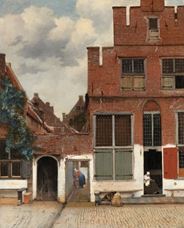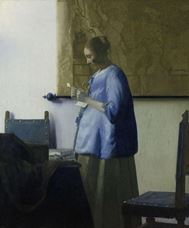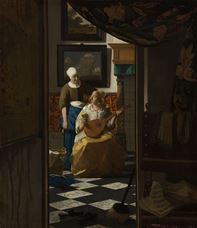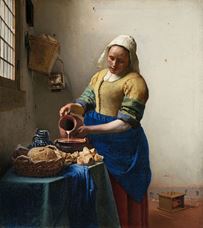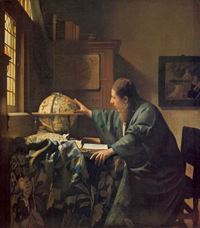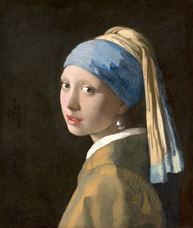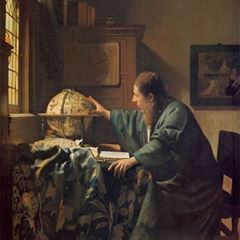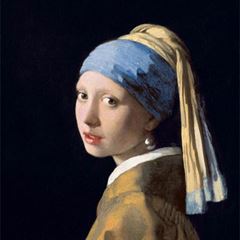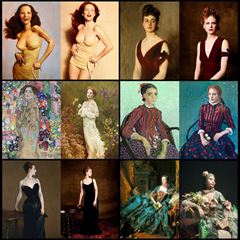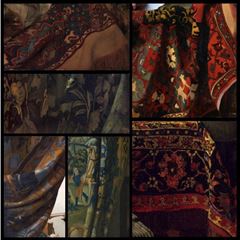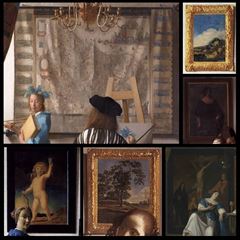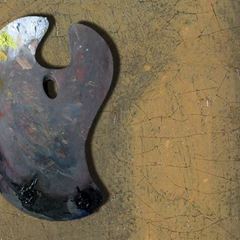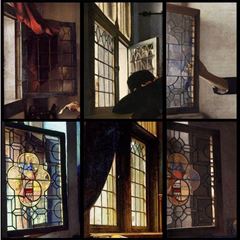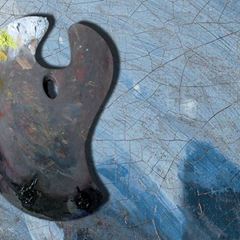The most well-known paintings in the history of art have been reconsidered from a different point of view. Famous paintings of world-renowned painters have been reinterpreted by a photo shoot with Nicole Kidman, Julianne Moore, Jessica Chastain, Naomi Campbell, Laetitia Casta, and Nicki Minaj. Photo shoots for Johannes Vermeer, John Singer Sargent, François Boucher, Gustav Klimt, René Magritte ...
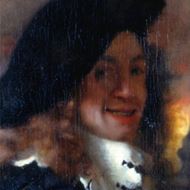
Johannes Vermeer
Johannes or Jan Vermeer was born in Delft, the Netherlands, in 1632 as the son of Digna Balthasars and Reynier Jansz. There is little known about the life of Vermeer. On 31 October 1632, he was baptized by the Flemish Reformed Church in the town of Nieuwe Kerk.
His father Reynier Jansz was born in the city of Delft and was working in the silk weaving industry. However, in 1641 he had taken the Mechelen hotel and started to operate. In addition, he was working as an art dealer, which a completely different sector from his profession.
Vermeer began working as an apprentice beside an artist whose name could not be identified in 1647. The researchers thought that this painter could be Hendrickvan der Burgh or Leonaert Bramer who was famous for his historical and religious paintings. They were also said that Carel Fabritius, one of Rembrandt's students, was the person Vermeer learned about painting. Vermeer's work for illustrating his models has been claimed to recall the paintings of Caravaggio followers who use the light-shadow technique used in Italian painting.
Vermeer became a member of the Delft Guild of Saint Luke as the master painter of Delft. The same year he married Catharina Bolnes, who came from a rich Catholic family. Catharina's mother Maria Thins did not approve of this relationship, but she could not prevent the marriage. After the marriage, Vermeer, Catharina, and Maria Thins were living in the same house. Eleven of the fifteen children of Vermeer and Catharina survived. After his father's death in 1655, Vermeer became head of the Mechelen hotel. At the same time, he continued to run his father's art gallery.
The early works of Vermeer were large-scale religious paintings such as those of other painters of the period. From his earliest known works "Christ in the House of Martha and Mary" (c. 1654-1656), he worked on a scene from the Bible. His second religious study was Saint Praxidis, in which he illustrated a Catholic saint of 1655. This picture was a rather dark composition as the use of light according to the next pictures. "Diana and her Nymphs" (1653-1654), also the only painting on the basis of his mythology was among the painting of this period. "The Procuress" (1656) of the same period was the first of two paintings signed by Vermeer. In 1657, he painted his first genre painting with the painting "A Maid Asleep" and started to get closer to his own style with this work. "Girl Reading a Letter at an Open Window" was the beginning of his original works. For the first time, the use of light that would be characteristic of Vermeer was visible in this picture. Pieter van Ruijven, one of the wealthy people living in Delft during this period, became Vermeer's patron. Vermeer did not have a hard time finding buyers for his works and he also had a wealth of clients outside the city.
In the 1650s, important names had graduated from Delft School of Painting. However, Vermeer had a special place in the Delft school. The school also had given importance to the perspective studies. In the workshops, building and especially interior space works were carried out. Vermeer and his friends were using the camara Obscura, the darkroom, which was the ancestor of the cameras to create an accurate composition. The darkroom was a simple box with an undeveloped form of the camera with a single hole to take light. The external object was projected onto a wall or canvas-like surface through a tube and a convex lens. With this method, the ratio and perspective can be accurately illustrated and a photographic perspective was obtained.
In 1660, Vermeer had developed his style quite and had begun to produce pictures with extensive details. During this period, the color palette had changed and became completely illuminated. Vermeer conceived all these effects by hiding the brush strokes and presenting it with photographic quality. The best example of Vermeer's photographic point of view was his work ”View of Delft" (c. 1660-1661). This was the second landscape study after "The Little Street" (c. 1657-1658). In addition to these two important outdoor works, Vermeer's paintings were illuminated houses.
Detailed interior paintings had become Vermeer's favorite topic. He took his inspiration from the daily events of life. Vermeer's subjects were women who read letters in front of the window, wrote letters on the desk, gave concerts with a small harpsichord, played the lute, sewed, worn a necklace around the neck, looked out the window, or did a daily job. Some of his paintings have included a second woman, who is usually a servant. He rarely performed male figures. The figures were usually next to the window on the left, according to the viewer.
One of the most important features of Vermeer was his way of using light. In the paintings, the source of the light was the window and the light was always on the left. The light coming through the window completely wraps some objects or figures, while some were reflected as droplets. Almost all of his paintings had a map. Another basic element in his paintings was that inside the picture contained a picture. Another noteworthy element was the scattered cover or carpet in the foreground. The curves of the cover, covered most of the surface of the painting in Vermeer's paintings as it allowed them to reflect the shadow and create the light. One of the most preferred pigments of Vermeer, who puts every picture in perspective with almost scientific accuracy, was blue from the lapis stone. This color was seen intensely in every painting and was the basic color of all shadows. However, he did not use black, instead, he preferred a mixture of brown and blue.
Vermeer's reputation as an interior painter was based on the 1660s. In 1662 and 1670, he had headed the Delft Painters Guild. But in this time, Delft painters were having trouble selling his paintings although they admired his paintings. He had become a prominent figure in the city of Delft, but during his lifetime, his fame had not been able to get out of his city. Although he was also an art dealer, he couldn't make enough money. his shortage of livelihood was causing him to borrow. The French-Dutch war that erupted in 1672 caused the country's political stability and economic prosperity to come to an end and the art market collapsed. All artists had entered a difficult period. For Vermeer, who had to close his gallery in the same year, his years in luxury were finished; a miserable life with debts was began.
When Vermeer died in Delft in 1675 at the age of 43, he was inside in great debt. Although he was a lesser-known local painter during his lifetime, nowadays he became one of the great painters of the world. In 1866, the French critic Thoré-Bürger had unearthed Vermeer, who had been abandoned forgotten for two centuries after his death. Since then, he has been counted among the greatest masters of painting.
Bibliography;
Yetkin, S.K., (2007). Büyük Ressamlar, Birinci Baskı, Palme Yayıncılık, Ankara.
Lunday, E., (2013). Büyük Sanatçıların Gizli Hayatları, Beşinci Baskı, Domingo Yayınevi, İstanbul.
Gombrich, E.H., (2002). Sanatın Öyküsü, Üçüncü Baskı, Remzi Kitabevi, İstanbul.
Farthing, S., (2014). Sanatın Tüm Öyküsü, İkinci Baskı, Hayalperest Yayınevi, İstanbul.
Turani, A., (2010). Dünya Sanat Tarihi, On Dördüncü Baskı, Remzi Kitabevi, İstanbul.
-----------., (2006). Vermeer, İkinci Baskı, Boyut Yayın Grubu, İstanbul.
Akbulut, D., (2011). Resim Neyi Anlatır, Birinci Baskı, Etik Yayınları, İstanbul.
The Astronomer - Johannes Vermeer
In the 17th century, where important scientific discoveries took place, the discoveries of sea explorations and astronomers emerged. Accordingly, the theme of the research that makes the research was frequently processed in paintings and engravings. Vermeer's "The Astronomer" painting ...
Girl with a Pearl Earring - Johannes Vermeer
The girl's name in the picture was unknown and assumptions were made about her identity. It was supposed to be Vermeer's daughter or maid. But Maria, Vermeer's eldest daughter, was 11 years old, and the model in the painting was larger. Her identity could not be removed from her dress. The silk scarf and pearl earrings were just fancy accessories of the girl. The girl's father, or her husband, could have been rich since she had this earring.
"Cover or Carpet" in His Artworks - Johannes Vermeer
One of the most important characteristics of the Dutch painter Johannes Vermeer (1632-1675) was his use of light. In the paintings, the source of the light was the window and the light was always on the left. The light coming out of the window completely reflected some objects or figures, while others were reflected as droplets. Another item that attracted attention in her paintings was the bedspread or carpet in the foreground. Since the curves of the cover were able to reflect the shade and create the light, they covered most of the surface of the painting in Vermeer's paintings ...
"Table and Map" in His artworks - Johannes Vermeer
The paintings of the Dutch painter Johannes Vermeer (1632-1675) were usually the interior of the lighted houses. The basic elements in the paintings of Vermeer, an interior space painter, were usually a light source window, and the presence of a scattered cover or rug in the foreground. Another item that attracted attention was a map in almost all tables. Another basic element in the paintings was the table in the table...
Johannes Vermeer: Brush Touches
Johannes Vermeer did not produce much work. Most of his works are interior variations. The fine details in these works dazzle. The textures, colors, and shapes are meticulous and absolutely described. The mastery of the use of light is clearly noticeable in the reflection on the objects in the space.
"Windows" in His Artworks - Johannes Vermeer
Dutch painter Johannes Vermeer (1632-1675) had become the subject of detailed interior paintings. His inspiration was taken from the daily events of life, and the figures were usually near the window on the left, according to the viewer. One of the most important features of Vermeer was its use of light. In the paintings, the source of the light was the window and the light was always on the left...
Johannes Vermeer: Brush Touches
Johannes Vermeer's "Girl with the Red Hat" , "Officer and Laughing Girl" and "Girl with a Pearl Earring“ with his paintings, details, color transitions and brush strokes;













